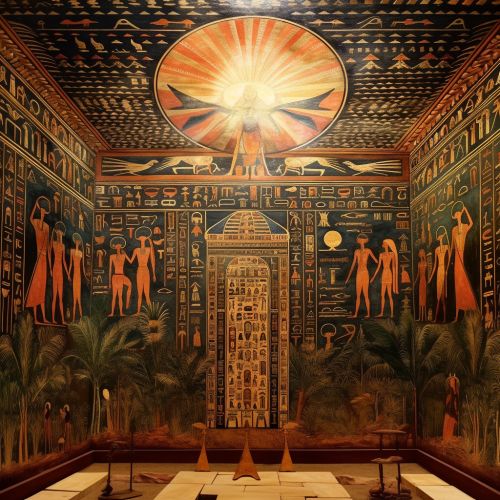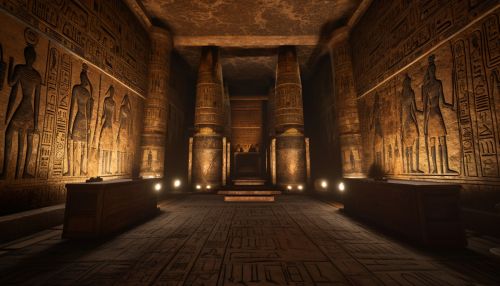Egyptian afterlife beliefs
Introduction
The ancient Egyptians held a complex set of beliefs about the afterlife, which were central to their religion and culture. These beliefs were based on the concepts of Maat, the eternal order of the universe, and the journey of the ka, or spirit, after death.


Beliefs about the Afterlife
The ancient Egyptians believed that life did not end with death, but rather, it was a transition to another realm, the afterlife. They believed that the soul, or ka, would continue to exist in the afterlife, which was often depicted as a mirror image of the earthly life, but devoid of any suffering or hardship.
Journey of the Soul
Upon death, the Egyptians believed that the ka would embark on a journey to the afterlife. This journey was fraught with challenges and trials, and the deceased needed to be properly prepared to overcome them. This preparation involved elaborate burial rituals, including mummification, and the provision of grave goods to aid the deceased in their journey.
Maat and the Weighing of the Heart
Central to the Egyptian beliefs about the afterlife was the concept of Maat, which represented truth, balance, and order. After death, the deceased's heart was believed to be weighed against the feather of Maat in a ceremony known as the Weighing of the Heart. If the heart was found to be lighter than the feather, the deceased was deemed to have led a righteous life and was granted entry into the afterlife.
The Field of Reeds
The ultimate goal of the deceased was to reach the Field of Reeds, a paradisiacal realm where they could live eternally in peace and abundance. The Field of Reeds was often depicted as a lush and fertile land, similar to the earthly life but without any hardship or suffering.
Funeral Practices
Funeral practices in ancient Egypt were designed to ensure the safe passage of the deceased to the afterlife. These practices included mummification, the construction of tombs, and the provision of grave goods. The process of mummification was particularly important, as it was believed to preserve the body for the ka to inhabit in the afterlife.
Tombs and Pyramids
Tombs and pyramids were an integral part of the Egyptian beliefs about the afterlife. These structures served as the eternal homes for the deceased and were filled with grave goods to aid them in their journey to the afterlife. The grandeur of these structures reflected the importance the Egyptians placed on the afterlife.
Amulets and Spells
Amulets and spells were also used to protect and guide the deceased in the afterlife. These were often inscribed on the walls of the tombs or on the papyrus scrolls placed with the deceased. The spells were intended to help the deceased overcome the challenges they would face on their journey to the afterlife.
Conclusion
The beliefs and practices associated with the afterlife were central to the religion and culture of ancient Egypt. They reflected the Egyptians' views on death, the soul, and the cosmos, and continue to fascinate scholars and enthusiasts today.
